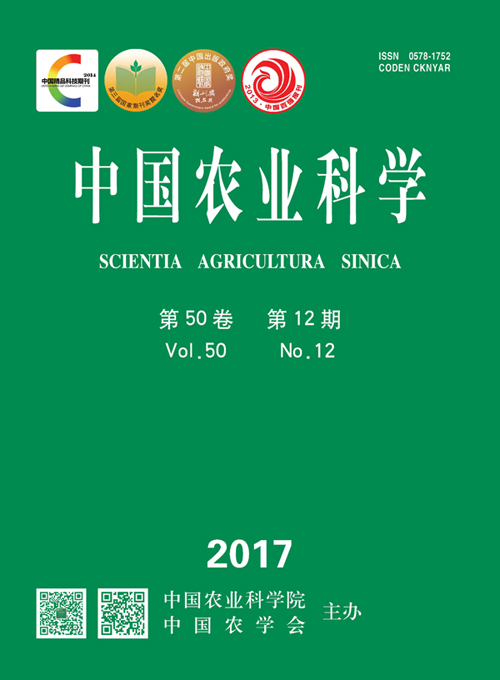-
Effect of Different Maize Varieties and Nitrogen Supply on Root Characteristics and Nitrogen Uptake and Utilization Efficiency
- CHENG Yi, WANG HongZhang, LIU Peng, Dong ShuTing, ZHAO JiuRan, WANG RongHuan, ZHANG JiWang, ZHAO Bin, LI Geng, LIU YueE
-
Scientia Agricultura Sinica. 2017, 50(12):
2259-2269.
doi:10.3864/j.issn.0578-1752.2017.12.007
-
 Abstract
(
469 )
Abstract
(
469 )
 HTML
(
4 )
HTML
(
4 )
 PDF (470KB)
(
713
)
PDF (470KB)
(
713
)
 Save
Save
-
References |
Related Articles |
Metrics
【Objective】Through the study of the relationship of maize root characteristics and nitrogen uptake and utilization efficiency, shoot biomass and yield formation to prove the effect of root morphological characteristics and nitrogen uptake capacity of maize yield. And then provide theoretical basis for the high yield and efficiency of maize production.【Method】The experiments were conducted in 2014-2015 at the Technological Innovation Center of Maize in Huang-Huai-Hai Region (36°18' N, 117°12' E) and the State Key Laboratory of Crop Biology, located at Shandong Agricultural University in Taian. To explore the effect of different maize varieties and nitrogen supply on root characteristics and nitrogen uptake and utilization efficiency, using Jingke 968 (JK968), Zhengdan 958 (ZD958) and Xianyu 335 (XY335) as the experimental materials, setting two nitrogen levels, 1.5 g/plant (low nitrogen, LN) and 4.5 g/plant (high nitrogen, HN), sampling root and shoot of plant at tasseling stage and maturity stage for determination of the related indexes of root system (the root dry weight, root length, root surface area, root volume), dry matter and nitrogen accumulation and distribution in soil column tests.【Result】The results showed that grain yield and biomass per plant, each index of root, nitrogen accumulation amount per plant, nitrogen translocation rate, nitrogen harvest index and use efficiency of JK968 were all significantly higher (P<0.05) than those of XY335 and ZD958. The biomass, grain yield, N accumulation amount per plant of JK968 were higher than those of XY335 and ZD958 by 15.2%, 17.7%, 9.0% and 31.6%, 44.1%, 31.4%, respectively, under LN level, 5.4%, 12.9%, 8.9% and 13.5%, 26.8%, 23.5%, respectively, under HN level. Compared with LN level, the biomass, grain yield, N accumulation amount per plant at the HN level of JK968, XY335 and ZD958 increased by 15.7%, 10.2%, 33.9% and 26.5%, 14.8%, 34.0% and 4.3%, 25.1%, 42.5%, respectively. The root dry weight, root length, root surface area, root volume of JK968 at tasseling stage are higher than those of XY335 and ZD958 by 41.8%, 9.0%, 47.1%, 24.0% and 63.2%, 41.6%, 60.4%, 105.1%, respectively, under LN level, 24.3%, 6.0%, 35.2%, 19.7% and 40.3%, 30.0%, 49.3%, 78.7%, respectively, under HN level. Compared with LN level, the root dry weight, root length, root surface area, root volume at the HN level of JK968, XY335 and ZD958 increased by 48.3%, 37.3%, 36.4%, 12.7% and 69.1%, 41.3%, 48.4%, 16.7% and 72.5%, 49.7%, 46.5%, 29.3%, respectively. The correlation analysis indicated that the amount of N-uptake showed a significant positive linear correlation with the root dry weight, root length, root surface area and root volume. The root index of different cultivars showed different responses to nitrogen, which the responsivity of each root index of JK968 to nitrogen was higher before tasseling but lower after tasseling than XY335 and ZD958. 【Conclusion】As for JK968, the root indexes of the whole growth period were significantly higher than those of XY335 and ZD958, it had a stronger nitrogen uptake ability and larger biomass, which were more distinct at the low nitrogen level. All these indicate that the larger root system of JK968 can ensure the nitrogen uptake to have higher nitrogen transportation efficiency, nitrogen contribution rate and nitrogen utilization efficiency, making for its material production, and finally obtaining a higher grain yield.









